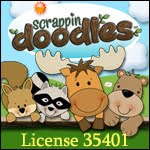The Three Part Lesson- Revisited
Math Workshop Series Part 4B
Please read Part 4- The Three Part Lesson here first!
I love Math Huddles and the Three-Part Lesson. It is definitely my favourite way to teach a math concept over the course of a week. This is a post from last year, but I've added some details to help you see the three-part lesson in action.
As we transitioned from our data management unit into our geometry unit, I thought it would work well to combine the concepts of sorting using 2-3 attributes with attributes we would be studying about 2D shapes.
Part 1: Minds On
First I handed out a bag of attribute blocks to each pair of students and we brainstormed the types of attributes the blocks had. Notice the geometry vocabulary that popped up- all from the students, I swear! The question I posed is written on the board and the student answers are on the paper.
Part 2:
Then I gave students this prompt and let them go. No directions about how to sort, tools to use to sort, etc. Just totally open ended problem solving.
And not surprisingly most students created some type of chart. It was very interesting to see which attributes the students choose and how they organized their chart. At the end of the lesson we debriefed (Part 3) their sorting and created some anecdotals- you can see those written on the cue card in the green marker. This is where bansho (board writing comes in).
Then over the next few days I introduced the ideas of sorting using a venn diagram for both 2 and 3 attribute sorting using the three-part lesson format.
For the Minds On we revisited our work from the previous day and built on our knowledge. Then for the Working On it we worked with a different type of venn diagram everyday.
It took some work and discussion but we got there. During Part 3- the debrief/consolidation- I would put up all the work done by all the students and then we would discuss whether their sorting followed the rules we created. If the venn diagram wasn't accurate enough or didn't fit, it was removed from the display. In this way I feel that my students are constantly a part of the creation of their own learning, the display of work in the class and that they see the importance of reviewing your work and making it better if possible.
At the end of the week we listed all of the important ideas or big ideas we had learned. And boy did we learn a lot!
Once you try a three-part lesson you'll love it, and probably discover that you've actually been teaching this way for awhile. The biggest benefit is the amount of time the students are actively involved in constructing their own understanding. It's a change in the traditional role of the teacher at the front of the class giving the information, but I promise you will discover that your students learn so much more!!







































